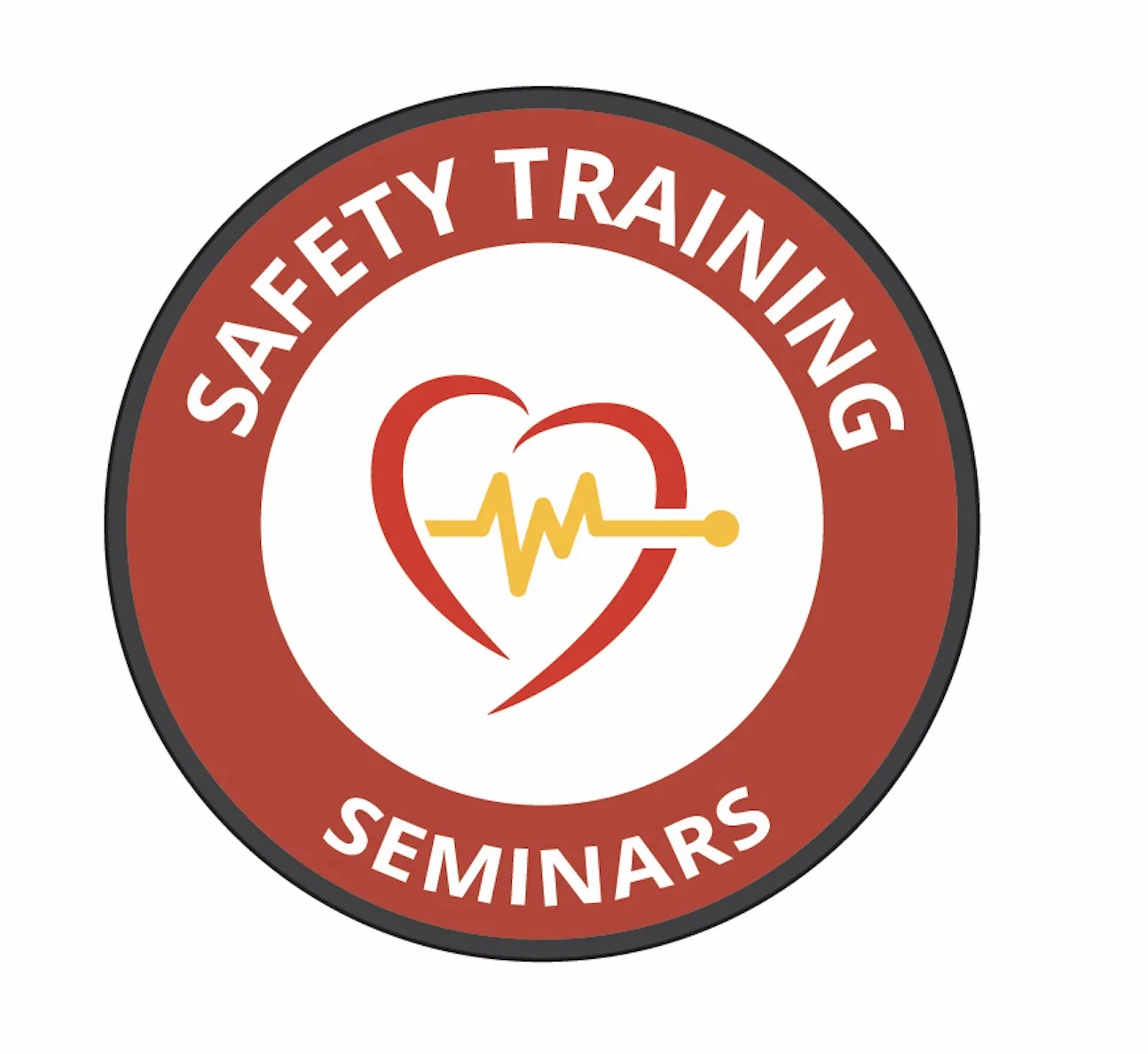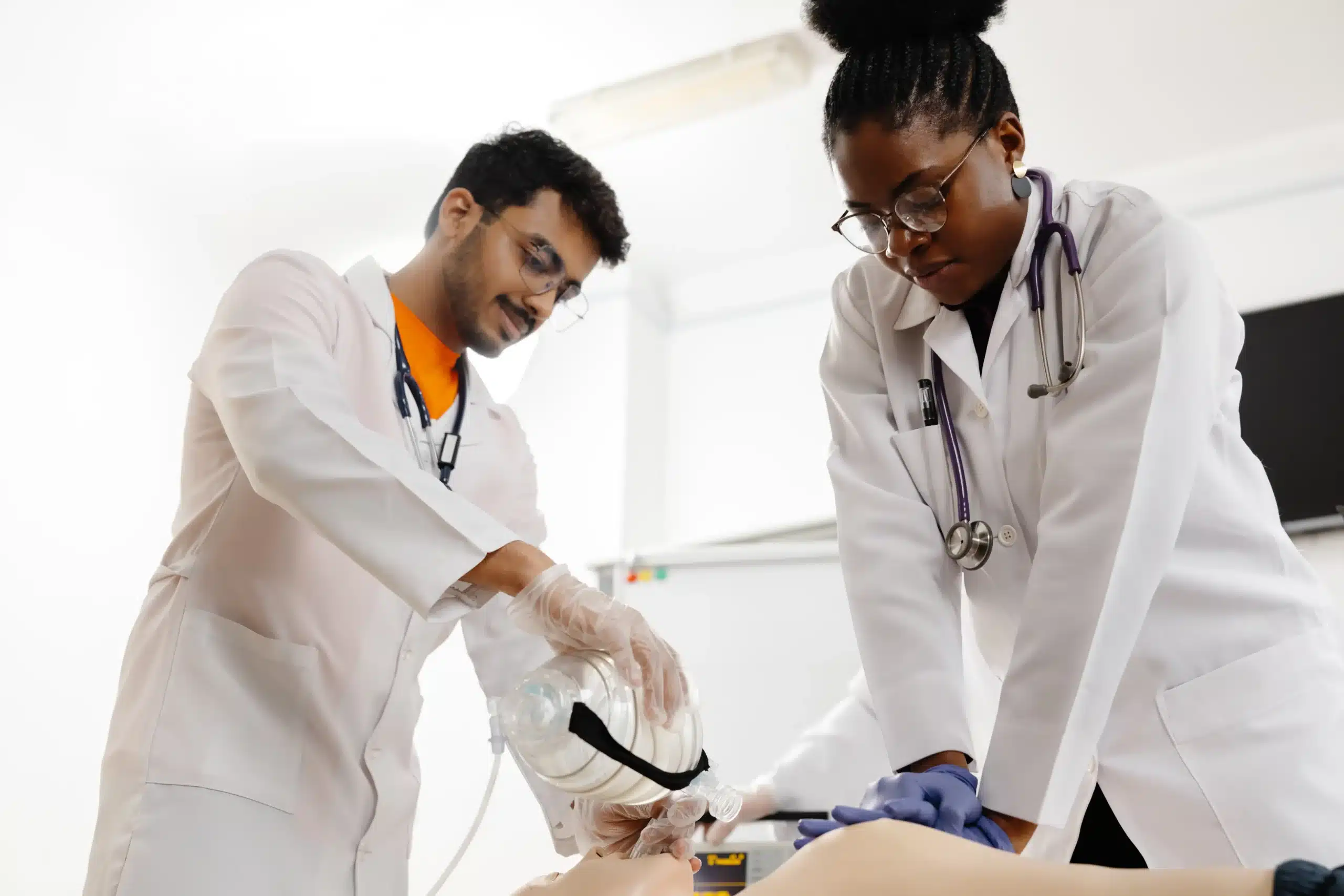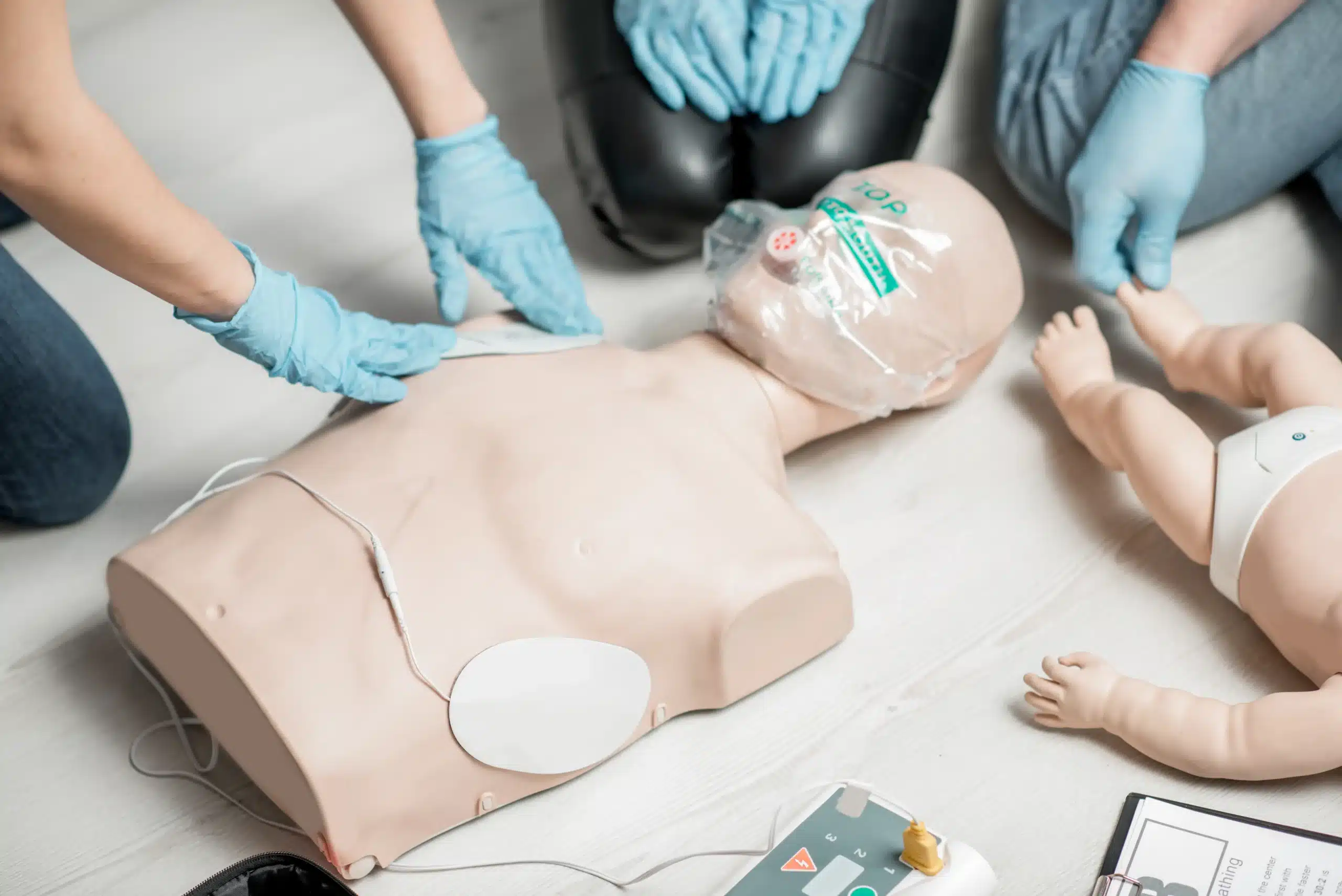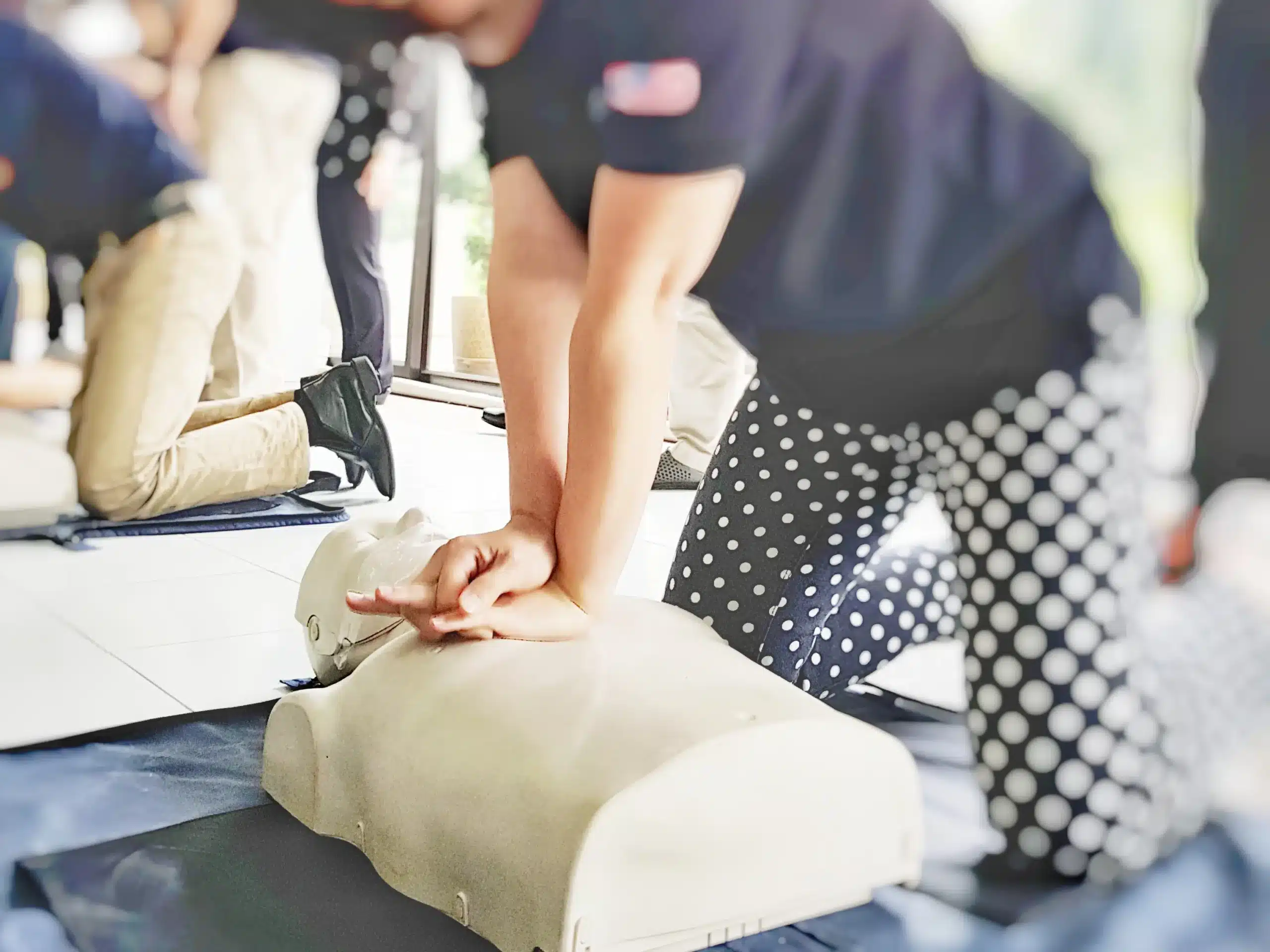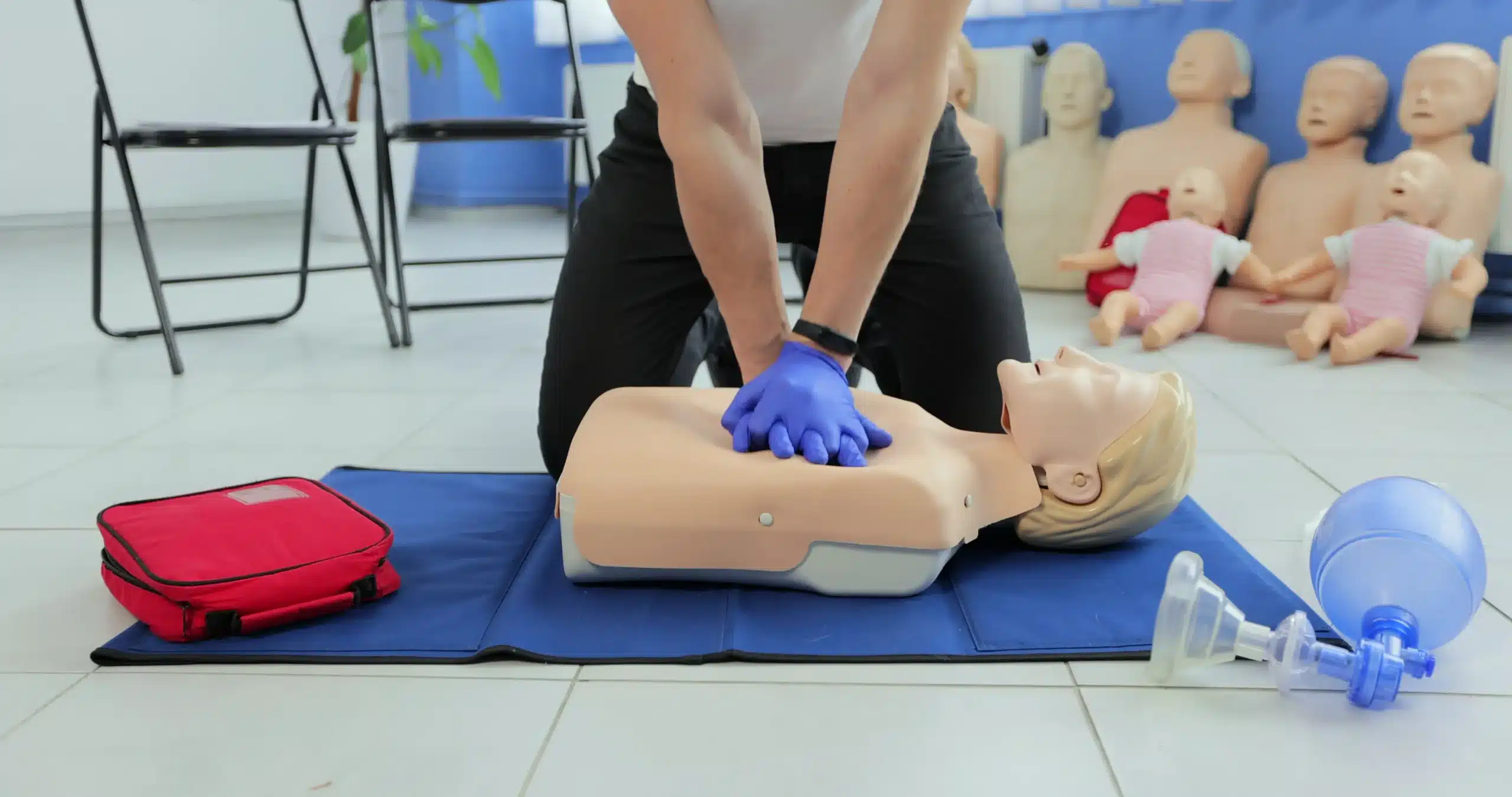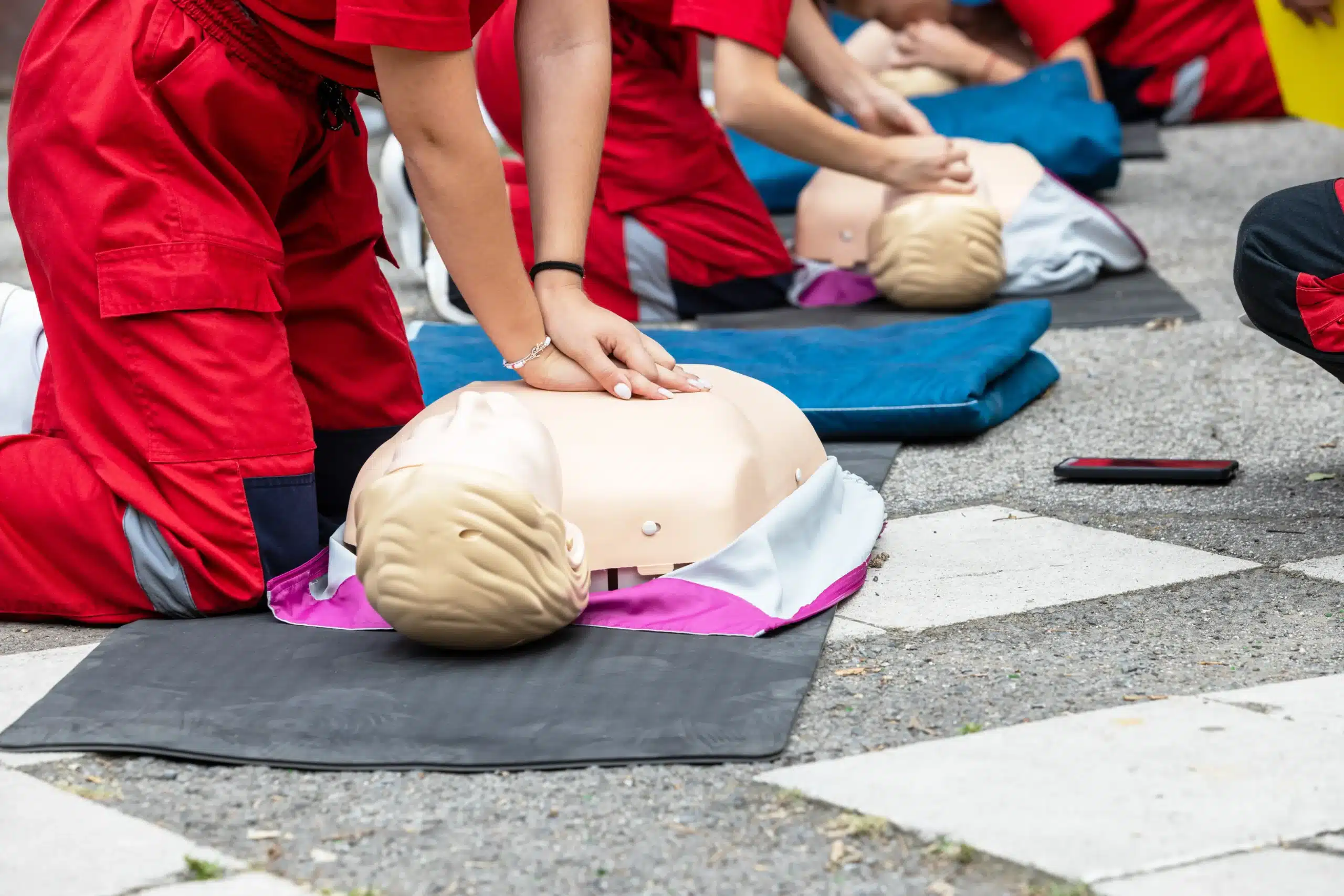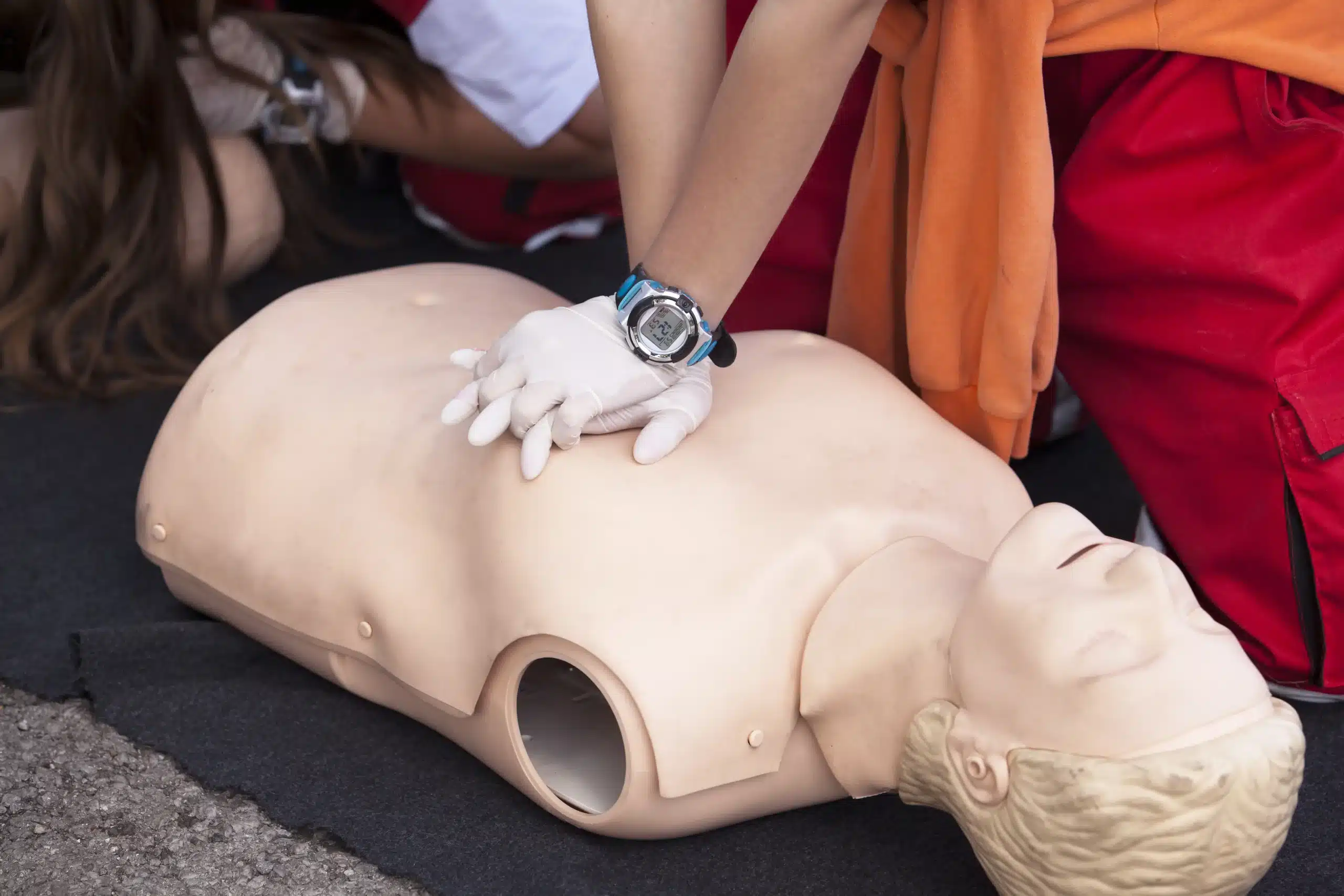In the face of a medical emergency, seconds can feel like hours. CPR certification equips you with the skills to act quickly and confidently, potentially making the difference between life and death. This guide is your roadmap to finding “CPR certification near me,” covering everything from the basics of CPR to choosing the right course and preparing for your training. We’ll explore reputable organizations like the American Heart Association and the American Red Cross, discuss the various types of CPR certifications, and address common misconceptions. Whether you’re a healthcare provider or simply want to be prepared, this guide will empower you to make a real difference in your community.
Key Takeaways
- CPR certification equips you to handle emergencies: Learn the skills to respond to cardiac arrest and other breathing crises with confidence. Explore various CPR certifications, from basic to advanced, to find the right fit.
- Find a CPR course that works for you: Consider in-person, online, or blended learning options based on your schedule and learning preferences. Research reputable providers like the American Heart Association or the American Red Cross.
- Stay current with your CPR skills: Maintain your certification through renewal courses to keep your knowledge and techniques up-to-date. Regularly refreshing your skills ensures you’re prepared to make a difference when it matters most.
What is CPR Certification?
What is it?
CPR certification equips you with the skills to respond to cardiac arrest and other breathing emergencies. It’s a structured program that teaches you the proper techniques for chest compressions, rescue breaths, and how to recognize the signs of someone needing CPR. You’ll learn how to assess the situation, perform CPR effectively, and potentially use an AED. While you don’t technically need formal CPR certification to perform CPR in an emergency, completing a certified course ensures you can act confidently and correctly under pressure. These courses provide a standardized, evidence-based approach, giving you the knowledge and practice necessary to make a real difference. Bay Area CPR offers a range of courses to fit your needs.
Why does it matter?
CPR certification matters because it empowers you to save lives. Studies show that effective bystander CPR can dramatically improve survival rates after cardiac arrest. CPR training teaches you to remain calm and act quickly in high-stress situations, increasing the chances of a positive outcome. Regular recertification is essential to keep your skills fresh and aligned with the latest guidelines. Beyond the practical skills, CPR certification provides peace of mind, knowing you’re prepared to handle emergencies. Whether you’re a healthcare professional, a concerned parent, or simply someone who wants to be prepared, CPR certification is a valuable investment. For those in the Bay Area, consider checking out local CPR training options for convenient and comprehensive instruction.
Find CPR Certification Courses Near You
Finding the right CPR class can feel overwhelming, but it doesn’t have to be. Start by exploring these reputable organizations that offer CPR certification:
Top Organizations Offering CPR Certification
American Heart Association (AHA)
The American Heart Association sets the standard for CPR training. Their courses are widely accepted and known for their rigorous approach, giving you the confidence to act in emergencies. They offer various courses, from basic CPR to advanced certifications for healthcare providers.
American Red Cross (ARC)
The American Red Cross is another trusted source for CPR training. They offer various learning formats, including in-person classes and blended learning options that combine online coursework with hands-on skills sessions. The Red Cross also provides first aid and other safety training.
Emergency Care & Safety Institute (ECSI)
ECSI provides comprehensive CPR and first aid training programs. Their courses equip you with the skills and knowledge to respond effectively in various emergency situations. ECSI also offers specialized training for workplaces and healthcare professionals.
Bay Area CPR
If you’re in the San Francisco Bay Area, Bay Area CPR offers convenient and flexible CPR certification courses. They provide American Heart Association-certified training in BLS, ACLS, PALS, and more. Their focus on local communities makes them an excellent resource for individuals and groups. They serve San Francisco, Daly City, San Mateo, and Oakland, CA.
National Safety Council (NSC)
The National Safety Council offers a broad range of safety training programs, including CPR certification. They cater to various audiences, from individuals to businesses, and provide options for online, in-person, and blended learning.
ProCPR
ProCPR specializes in online CPR certification, offering a flexible and convenient way to learn lifesaving skills. Their self-paced courses allow you to study when and where it works best for you. This is a great option for those with busy schedules.
American Safety & Health Institute (ASHI)
ASHI provides CPR, first aid, and other safety training programs that meet OSHA standards. Their courses are widely recognized and accepted by employers in various industries. ASHI offers both in-person and online training options.
Types of CPR Certification Courses
Knowing which CPR certification is right for you depends on your goals and career path. Let’s break down some of the most common types of CPR courses.
Basic Life Support (BLS)
BLS certification covers fundamental CPR skills and is often a prerequisite for other advanced certifications. It’s designed for healthcare providers, like doctors and nurses, and anyone who needs to know how to perform CPR in various settings. The BLS course teaches single-rescuer and team-based CPR for adults, children, and infants. You’ll also learn how to use an automated external defibrillator (AED) and relieve choking. BLS certification is a great foundation for anyone, even if you’re not in the medical field.
Advanced Cardiac Life Support (ACLS)
ACLS certification builds upon the skills learned in BLS and focuses on advanced life support techniques for adult patients experiencing cardiac arrest or other cardiovascular emergencies. This ACLS certification is geared towards healthcare professionals who manage respiratory and cardiovascular emergencies, often in hospital settings. ACLS training covers topics like airway management, rhythm recognition, and pharmacology related to cardiac emergencies.
Pediatric Advanced Life Support (PALS)
PALS certification is specifically designed for healthcare providers who care for infants and children. This course teaches advanced life support techniques for pediatric emergencies, including respiratory distress, shock, and cardiac arrest. PALS training emphasizes the importance of teamwork and high-quality individual skills to improve outcomes for young patients.
Wilderness First Aid
Wilderness First Aid (WFA) isn’t technically a CPR certification, but it’s a valuable course for anyone who spends time in remote areas where medical help may be delayed. A WFA course focuses on providing first aid in wilderness settings, including managing injuries, illnesses, and environmental emergencies. While CPR may be covered in a WFA course, the emphasis is on improvisation and resourcefulness when professional medical care isn’t readily available.
Choose the Right CPR Certification Format
Finding the right CPR class format depends on your learning style and schedule. Let’s explore the main options: in-person, online, and blended learning. Each has its own advantages, so consider what works best for you.
In-Person Classes: Hands-On Learning
In-person CPR training offers hands-on learning with a certified instructor. You’ll practice on CPR mannequins, giving you a realistic experience of performing compressions and rescue breaths. This format is ideal for those who learn best through physical practice and direct interaction. This tactile experience builds confidence and muscle memory, crucial for effective CPR in real-life emergencies. As Emergency First Response points out, using a mannequin in a hands-on class helps you learn the correct placement and pressure for effective chest compressions.
Online Courses: Flexibility and Convenience
Online CPR courses provide flexibility for busy schedules. You can learn the material at your own pace, anytime, anywhere. This format often involves video demonstrations and interactive modules. While online courses may not offer the same hands-on practice as in-person classes, they provide a solid foundation in CPR knowledge and techniques. This option is perfect for those who prefer self-directed learning or have limited time for traditional classes. As CPR Classes notes, online courses can equip you with the knowledge and skills needed for CPR certification.
Blended Learning: Best of Both Worlds
Blended learning combines online coursework with in-person skills sessions. You’ll typically complete the coursework online, then attend a shorter in-person session for hands-on practice and assessment. This approach offers both flexibility and the opportunity to refine your technique under the guidance of an instructor. Blended learning is a great option for those who want a comprehensive learning experience with a flexible schedule. As Daily Trust highlights, many CPR certification courses offer this blended format as part of their training. This combination allows you to absorb information at your own pace and then solidify your skills through practical application.
Cost & Value of CPR Certification
Getting CPR certified is an investment in yourself and your community. Let’s break down the costs and explore why it’s a worthwhile expense.
Typical Price Ranges
CPR certification courses typically range from $60 to $100, depending on the provider, location, and course content. For example, an American Heart Association (AHA) BLS CPR and AED certification, covering adults, children, and infants, averages around $70. A more comprehensive course, including First Aid training, might cost a bit more, usually between $80 and $90. For specific pricing details, check out our AHA course options.
Factors Affecting Cost
Several factors influence the final cost of your CPR certification. The course provider (AHA, Red Cross, etc.) often sets its own pricing. The type of certification also matters. Basic CPR and AED training is typically less expensive than advanced certifications like ACLS (Advanced Cardiac Life Support) or PALS (Pediatric Advanced Life Support). Including additional training, such as standard First Aid or wilderness first aid, will also affect the total cost.
Long-Term Benefits
While there’s an upfront cost for CPR certification, the value extends far beyond the price tag. Most CPR certifications are valid for two years, giving you the confidence of knowing you have the skills to potentially save a life. Renewal is straightforward and keeps your skills current. Even if your workplace doesn’t require it, renewing your CPR certification demonstrates your commitment to preparedness. It’s a small price for peace of mind and the potential to make a real difference.
What to Expect in Your CPR Course
So you’ve signed up for a CPR class—congratulations! Learning CPR is empowering, and it equips you to handle emergencies. Here’s a glimpse of what awaits you:
Course Duration and Structure
CPR courses typically run for a few hours, often as part of a broader first aid course covering wound care, managing fractures, and other medical emergencies. The course blends classroom instruction with hands-on practice. Expect a dynamic learning environment with discussions, demonstrations, and simulations.
Key Skills You’ll Learn
Your CPR course will cover essential lifesaving techniques, including recognizing cardiac arrest, when to call 911, and how to deliver effective chest compressions and rescue breaths. Many courses also include AED training. Hands-on practice with a CPR training mannequin is crucial. You’ll learn proper hand placement, compression depth, and rhythm to build confidence for real-life scenarios.
Certification Process and Assessment
Most CPR courses involve a written exam and a practical skills test. The written portion covers CPR principles and procedures, while the practical test involves demonstrating CPR on a manikin. After successfully completing both, you’ll receive your CPR certification. Keep in mind that CPR certification requires periodic renewal, so stay informed about the requirements to maintain your skills.
Maintain Your CPR Certification
CPR certification isn’t a one-and-done deal. Staying current with your skills is crucial for providing effective lifesaving care. This section covers everything you need to know about maintaining your CPR certification.
Certification Validity Period
Most CPR certifications are valid for two years. This timeframe reflects the ongoing evolution of best practices in CPR techniques. After two years, a refresher course ensures your skills and knowledge remain sharp and aligned with the latest guidelines. Knowing how long your CPR certification is valid helps you plan ahead.
Renewal Process and Requirements
Renewing your CPR certification is straightforward. Many organizations, including the American Red Cross, offer renewal courses for those with expiring certifications. You can usually choose between a blended learning format (combining online study with in-person skills practice) or a traditional classroom setting. If your certification is close to expiring, prioritize finding a CPR renewal course to avoid a lapse in your credentials. Check with your certifying organization for specific renewal requirements. At Bay Area CPR, we offer various renewal options to fit your schedule and learning preferences. Explore our CPR classes in the San Francisco Bay Area to find a course that works for you. We offer convenient options for renewing your BLS certification, ACLS certification, or PALS certification.
Stay Updated with Latest Techniques
CPR techniques evolve based on research and recommendations from organizations like the American Heart Association. Renewal courses incorporate these updates, ensuring you’re always equipped with the most effective lifesaving methods. Staying informed about these advancements is key to responsible CPR practice. Our courses at Bay Area CPR cover the most recent guidelines, giving you the confidence to respond effectively in an emergency. We also offer Wilderness First Aid training for those interested in expanding their skillset.
Prepare for Your CPR Course
Getting ready for a CPR course involves more than just showing up. A little prep work goes a long way in making sure you get the most out of your training. Here’s how to prepare:
Pre-Course Materials and Study Tips
Many CPR classes, like those offered by Bay Area CPR, provide pre-course materials. These might include a textbook, online modules, or videos demonstrating the techniques you’ll learn. Reviewing these materials beforehand gives you a head start and lets you familiarize yourself with the terminology and concepts. This is especially helpful for courses like BLS, ACLS, and PALS, which cover more advanced life support skills. Don’t try to memorize everything, but aim for a general understanding. Preparing for your CPR certification can make a big difference.
What to Bring to Class
Comfort is key! Wear loose, comfortable clothing that allows for a full range of motion. You’ll be practicing on mannequins and working with other students, so avoid anything too restrictive. Bring a notebook and pen to jot down notes and any questions you may have. While most providers have everything you need for the in-class portion, it’s always a good idea to double-check beforehand. CPR guidelines are updated periodically by organizations like the American Heart Association, so your course will cover the most recent best practices. Learn more about how to prepare for your CPR training.
Mental and Physical Readiness
CPR training can be physically demanding, so make sure you’re well-rested and hydrated before class. A light meal or snack beforehand can also help maintain your energy levels. Just as important is your mental preparedness. Remember, the skills you’re learning can save lives. Approach the course with focus and a willingness to participate actively. Preparing for your CPR test can help you feel more confident. A positive attitude and a commitment to learning will make a significant difference in your overall experience.
Choose the Right CPR Provider
Finding the right CPR provider is just as important as choosing the right course. It impacts the quality of your training and your confidence in using those skills. Here’s what to keep in mind as you search for CPR certification courses in your area.
Factors to Consider
Think about what you want from your CPR training. Many CPR courses are bundled with first aid training, which covers injuries like wounds and fractures. Decide if a combined course fits your needs or if you prefer focusing solely on CPR techniques. Also, confirm the provider’s accreditation. A reputable organization, like the American Heart Association, ensures your training meets nationally recognized standards. This is especially important if your job requires CPR certification.
Questions to Ask Potential Providers
Don’t hesitate to ask potential providers some key questions. Ask about the course format. Do they offer online CPR certification, in-person classes, or a blend of both? Understanding the course structure helps you choose what works for your schedule and learning style. Also, ask about the practical skills test. This hands-on exam, usually performed on a manikin, lets you demonstrate your CPR skills. Knowing what to expect can ease pre-test nerves.
Common Misconceptions
Let’s clear up a few common misconceptions about CPR certification. While online CPR courses offer flexibility, they don’t fully replace the hands-on practice of an in-person class. Another misconception is that certification is mandatory to perform CPR. A good Samaritan can legally perform CPR without certification, but formal training gives you the skills and confidence to act effectively during a real emergency. Choosing the right provider and understanding the training process empowers you to become a skilled and confident lifesaver.
Why Local CPR Certification Matters
Getting your CPR certification isn’t just about checking a box; it’s about becoming a vital link in the chain of survival within your community. Choosing local CPR training offers unique advantages that go beyond the classroom.
Immediate Application of Skills
Emergencies happen unexpectedly, and when they do, seconds count. Local CPR certification equips you with the skills to respond effectively in your own community. If a medical crisis arises at your child’s school, your workplace, or a local park, you’ll be prepared to act quickly and confidently. The skills you gain can make a life-saving difference, bridging the gap until professional help arrives. Local CPR training ensures you’re ready to respond when it matters most.
Community Impact and Networking
Learning CPR creates a ripple effect of positive change within your local area. Effective bystander CPR can double or triple survival rates in cardiac arrest cases, directly impacting the health and well-being of your neighbors. Local CPR classes also provide opportunities to connect with other community members who share a commitment to safety and preparedness. You’ll build relationships with like-minded individuals, creating a network of support and shared knowledge that strengthens your community’s ability to respond to emergencies. This community impact is a powerful reason to pursue CPR training.
Support Local Training Centers
Choosing a local CPR training center offers more than just convenience; it’s an investment in your community. Supporting local businesses like Bay Area CPR ensures that high-quality training remains accessible within your area. These centers often tailor their courses to address the specific needs and challenges of your region, making your training even more relevant. Plus, by training locally, you’re contributing to the economic growth of your community and supporting the professionals dedicated to providing this essential education. Look for a CPR certification provider with high validity to ensure you receive quality training and build confidence in your abilities.
Frequently Asked Questions
What if my CPR certification expires? Don’t worry, renewing your certification is a simple process. Most organizations offer refresher courses that cover the latest guidelines and techniques. Check with your certifying organization for specific renewal requirements and look for a course that fits your schedule.
Which CPR certification is right for me? The best CPR certification depends on your individual needs. Basic Life Support (BLS) is a good starting point for most people. Healthcare providers often pursue advanced certifications like ACLS or PALS. If you enjoy the outdoors, consider Wilderness First Aid.
How can I find CPR classes near me? Start by searching online for CPR training providers in your area. Reputable organizations like the American Heart Association and the American Red Cross often have local chapters that offer classes. Also, check with community centers, hospitals, and first responder organizations.
What’s the difference between online and in-person CPR training? Online CPR training offers flexibility, allowing you to learn at your own pace. In-person classes provide hands-on practice with mannequins and direct interaction with an instructor. Blended learning combines the benefits of both formats.
Why should I get CPR certified? CPR certification empowers you to save lives. Knowing how to respond in a medical emergency can make a critical difference until professional help arrives. It also gives you confidence and peace of mind, knowing you’re prepared to act in a crisis.
